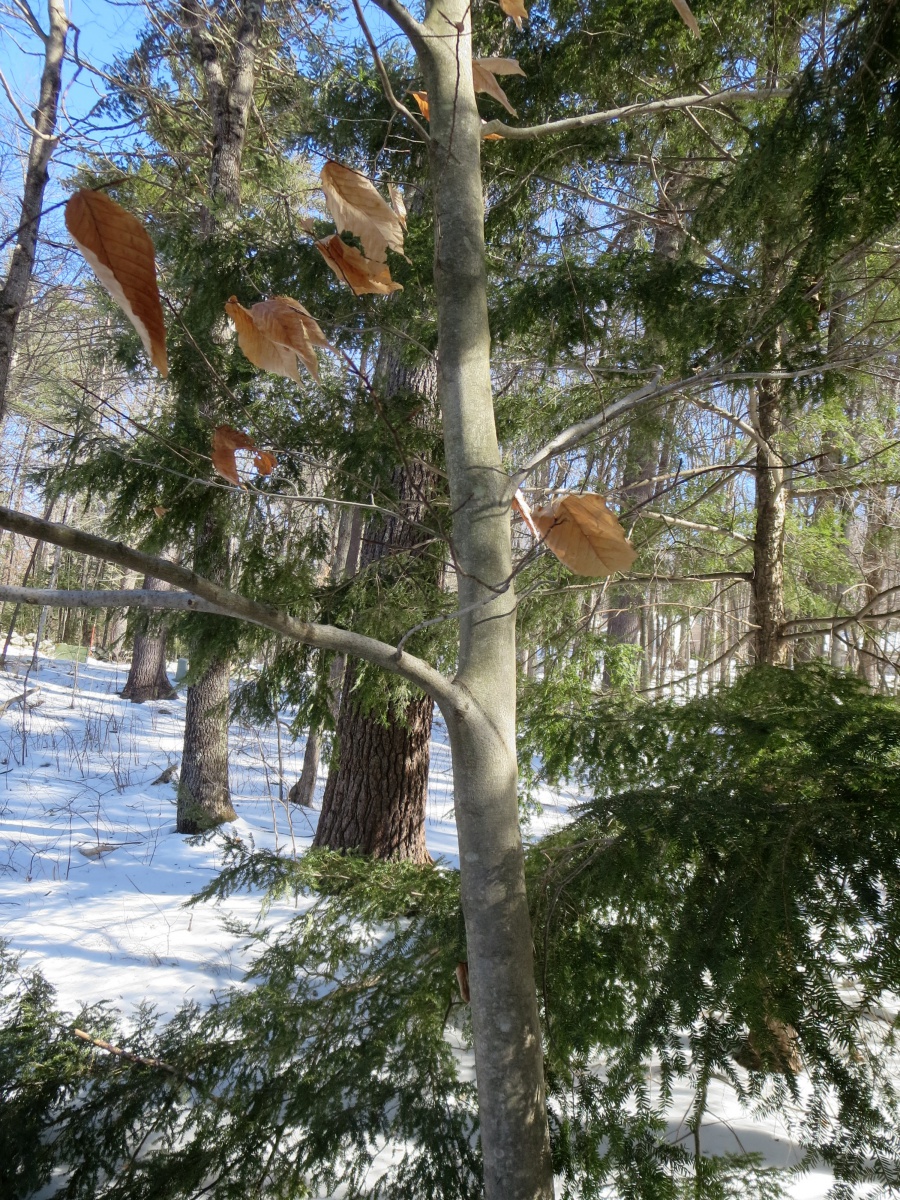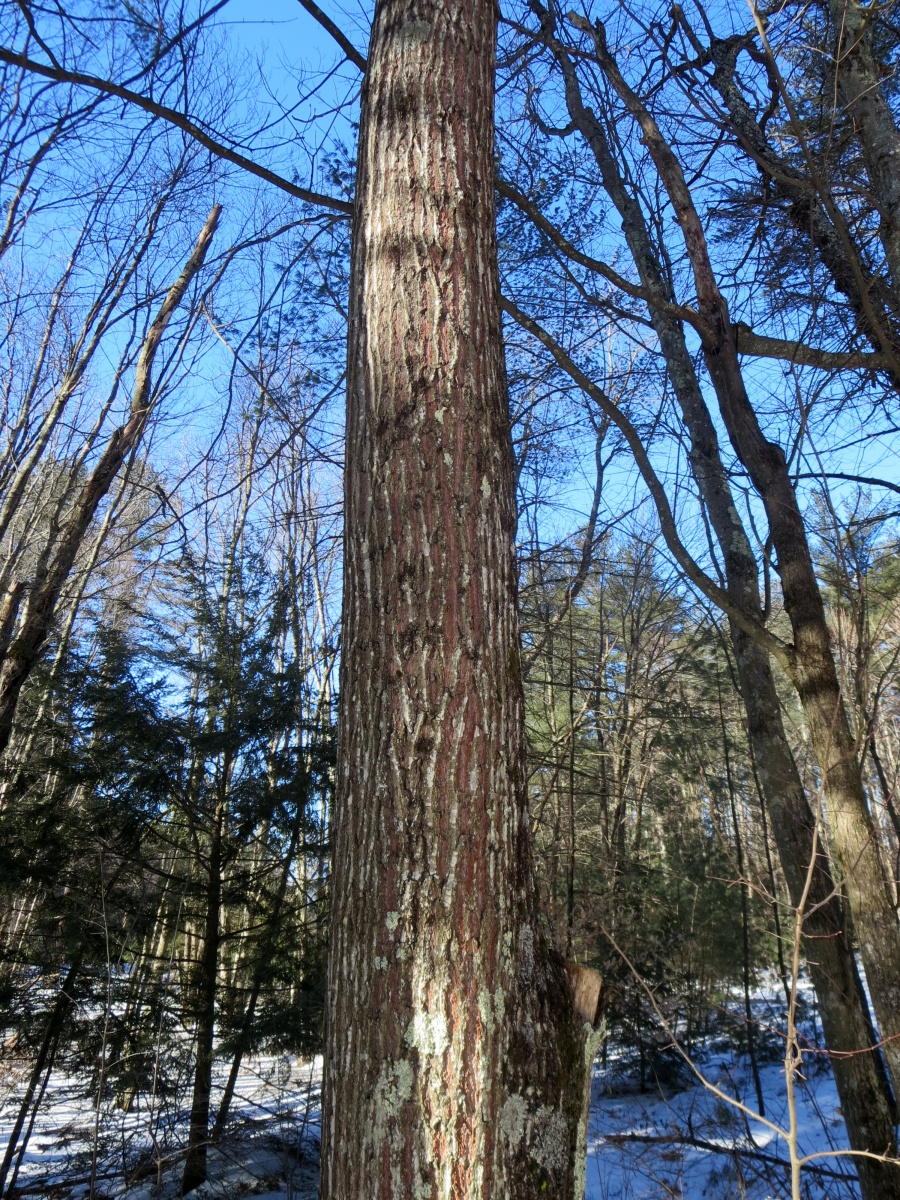Bark! A Great Way to Identify Trees in the Winter

Winter is the perfect time to get up close and notice and appreciate the variations of tree bark. Bark is an important clue in identifying trees, especially in winter when the bark stands out against the white snow. Some kinds of bark actually sparkle in the winter sunlight like both white and yellow birch.
Michael Wojtech’s book Bark, A Field Guide to Trees of the Northeast is a huge help. He has cleverly categorized tree bark into seven types, which simplifies recognizing and remembering all the different kinds of bark. Detailed features provide understanding on how different kinds of bark grow and age.
Wojtech lists five steps to Identifying trees by bark using his identification keys. The first is to “Read the introductory chapters to the book.” He provides a fascinating explanation of how and why tree species evolved unique bark with different characteristics like texture, color, thickness. Step two is to “Use the Primary Identification Key (inside the covers) to determine bark type”. The next two steps are instructions for using the keys, and the last one is to have fun!
Below are Michael Wojtech’s seven types of bark listed in his ‘Primary Key’, accompanied by winter photo examples of native trees found around my yard. The complication is that as each kind of tree matures, it passes through different categories: young, mature, and old. The changes from young to old are hardly noticeable on some species, and on others it is hard to believe that the pictures are of the same species! Some older trees exhibit all three growth stages from the old bark at the base of the tree to the younger bark on the branches at the top. The seven bark types vary from easy to inscrutable.
- Peeling horizontally in curly strips - Yellow Birch
- Lenticels visible – black birch and big tooth aspen
- Smooth unbroken – beech and red maple
- Vertical cracks or seams in smooth bark scarlet oak and shagbark hickory
- Broken in to vertical strips – intersect, pignut hickory
- Broken into scales or plates- scales – black cherry
- With ridges and furrows – ridges broken into large scales –pitch pine and northern red oak
The following simple example shows how it works using common NH trees:
(1) Peeling horizontally in curly strips - yellow birch
(2) Lenticels visible – black birch
(2) Lenticels visible – big tooth aspen
(3) Smooth unbroken – young red maple
(3) Smooth unbroken – beech

(4) Vertical cracks or seams in otherwise smooth bark - scarlet oak
(4) Vertical cracks or seams in otherwise smooth bark - young shagbark hickory

(5) Broken in to vertical strips – mature shagbark hickory
(5) Broken in to vertical strips – intersect - pignut hickory
(6) Broken into scales or plates – black cherry
(7) With ridges and furrows – northern red oak

(7) With ridges and furrows – ridges broken into large scales – pitch pine
For those of you ready to start, find a natural setting rather than a planted landscape where non-native trees might make it more difficult. You will probably find some of the same trees in these photos. Next, stop by your local library and checkout Bark, A Field Guide to Trees of the Northeast, by Michael Wojtech and add to your tree identification skills. Once you get practice, you’ll find that bark is a great tool for tree identification, and don’t forget to have fun!
About the Author
Anne Krantz admits, “I literally stumbled into the fascinating the Natural Resources Stewards Program and followed that with the comprehensive Master Gardener training.” Participating in a special training in 2009, Anne became part of the first team of volunteers to answer homeowner questions at the Education Center, an activity she continues to love.
“Because of these excellent education opportunities I now serve on my conservation commission, the NH Pesticide Board and the Rivers Management Advisory Council," she says. "I have also enjoyed UNH Extension's Big Tree program; I just found a flowering native chestnut tree this morning!”

